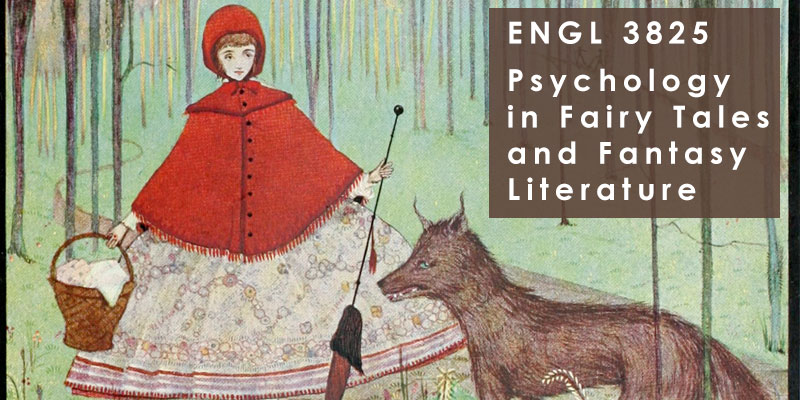Catalog Description: Prerequisites: Completion of Blocks A and B4, an additional course from Block B, and at least one course each from Blocks C and D. Exploration of how the rich literary heritage of fairy tales and fantasy literature informs our current notions of what it is to be human and how we can use literature to confront our deepest feelings. GE UD C; (wi)
Course Description: This course will introduce students to the depiction in Iiterature of major psychological and epistemological concepts. Long before the discipline of psychology was born, authors and audiences were interested in how and why human beings behave as they do. Classic literary texts, such as fairy tales, legends, epics, and myth portrayed in metaphoric and dramatic form the foibles and the proclivities of human nature. Many of the world’s most treasured literary texts are thinly veiled journeys of self-exploration. Modern authors have delved into the psychological realm as well, continuing to use narrative as a means of exposing our true selves. This course helps students understand how this rich literary heritage informs our current notions of what it is to be human and how we can use literature to confront our deepest feelings.
This course will also develop students’ ability to express in clear written form their understanding of the course themes as they are depicted in the selected texts. The course will include multiple writing assignments designed to hone the students’ skills in literary analysis and expository expression.
Learning Outcomes
Upon completion of this course, students will be able to:
- Demonstrate understanding of the diversity and complexity of the human search for meaning, value, and purpose, in particular how literary texts, such as fairy tales, use analogical representation to depict how audiences confront their inner selves and learning to overcome their psychological anxieties;
- Demonstrate an ability to respond subjectively as well as objectively to aesthetic experiences and develop an understanding of the integrity of both emotional and intellectual responses, in particular be able to explicate how the rhetorical and literary devices in the texts contribute to the emotional and intellectual responses generated by those texts;
- Demonstrate understanding of the interrelationship between the self and the creative arts and/or the humanities in a variety of cultures, in particular how similar psychological issues and concerns and the mechanisms for dealing with those issues and concerns are found in texts from various Western cultures;
- Demonstrate an understanding of the personal and social values of cultures and how ideas influence the character of human beliefs and the norms that guide human behavior, as explored in the study of cultures, philosophies, and literary texts, in particular how the literary examples examined in the course promote the development of personal understanding of the social values promulgated by the text.
Course Outline
Course content might be organized in a number of ways depending on instructor preference. Listed below is one possible organization.
I. Introduction
II. Psychology in Fairy Tales
- European Fairy Tales, Grimms’ Fairy Tales
- American Fairy Tales, Chase, The Jack Tales
III. Psychology in Epics and Legends
- Gilgamesh
- Oedipus Rex
- Beowulf
IV. Psychology in Modern Fiction
- The Rime of the Ancient Mariner
- The Turn of the Screw
- The Hobbit
About the Banner: Detail from Harry Clark, illustration in The Fairy Tales of Charles Perrault (1922) (image from http://commons.wikimedia.org/wiki/File:Page_24_illustration_from_Fairy_tales_of_Charles_Perrault_%28Clarke,_1922%29.png)
